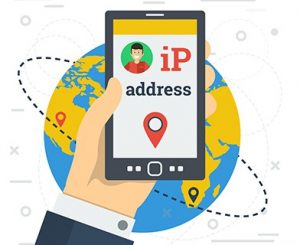In most cases, the inability to connect your devices to the internet is due to a faulty router. Since it is the central unit of your internet setting, you must ensure that it is in proper working condition. However, simply moving your router’s location is not enough. While optimum reception is a must, you should also get rid of other barriers and hindrances for proper connectivity. Here are some tips to connect your home’s internet to your router with ease.

- Check if Your Area Has an Internet Outage

One of the most common yet ignored issues related to poor router connection is an internet outage. Before investigating your device, check if your area has power or an internet outage. This issue can also be specific to your ISP, or internet service provider. Contact them to know if the connection is stable before you hop on to the next troubleshooting step. A quick Google search can also provide you with a recent status update about the internet connectivity in your locality. Certain websites in specific areas also provide information about current internet outages.
You can always contact the local home internet services to know more about the status of your area. Services are often quick to respond and can help you fix internet issues with ease.
2. Restart the Device
If your internet connection is stable, the next troubleshooting step is to restart your device and connect the router. In most cases, restarting the device works as it clears the operating system and reconnects to the internet. Before you turn on your router, wait for a few minutes for the internet to connect. Learn to read the router’s icons. Usually, A blue or green light on the Wi-Fi and globe icon indicates that the connection is stable and the router is working perfectly. If it shows an orange or a red light, you may have to restart the device.
3. Change the IP Address

One of the other common ways to fix this issue is by changing the IP address. Typically, personal internet users are provided with dynamic IP addresses that recognize the connection between your home’s Wi-Fi and your device. In case you are unable to connect the router, you can change the IP address to 192.168.10.1, which, ideally, is a Private address for the Internet Protocol (IP) and is dedicated to a set of devices. You can use the 192.168.10.1 login address on your router to connect to the internet.
To troubleshoot this code, access the autocomplete feature and use the right URL. The default login details should be changed to something more secure.
4. Change the Ethernet Cable

Ideally, connecting the router to an external Ethernet cable solves the problem. However, if you still face the issue, change the Ethernet cable and check if it is firmly attached to the device. Since physical barriers can weaken the connection, switching to a physical wire can do the trick. If you do not own a spare cable, order one as it can be helpful in the future. Since Ethernet cables wear out easily, it is possible that the issue may be due to a faulty wire. When not in use, store your cables in a safe spot away from pets and pests to avoid damage.
5. Use a Diagnostic Tool

An easy way to detect any issue with the router connectivity is by deploying a diagnostic tool that analyzes and troubleshoots the network and device. This, in turn, helps you decipher the crux of the problem and solve it immediately. Some third-party tools also configure device issues and provide an overview of network health in general. With this, you can ensure that your setup is always up and running without any hindrance. You can also monitor the traffic and detect operating system issues with these third-party diagnostic tools. Consult your router or device provider about the latest diagnostic tools and get one based on your requirements.
6. Dive into Your Router’s Firmware
If none of the tips work, you must look into your router’s firmware and upgrade it to the latest version. However, this can only work in case the router fails to connect to the device and not the internet. To upgrade the firmware to the latest version, you need to ensure that your router and internet are connected. If not, use an Ethernet cable to establish the connection. Once your computer is connected to Wi-Fi, you can then download the router’s firmware on your device and update it thereafter. While some updates are carried out automatically, others need manual operation.

In the end, you can also reset the internet and devices to start the process from scratch. In case you are not successful, contact your service provider. If you get a new device, get it professionally tested. More importantly, get additional Ethernet cables for emergencies.

